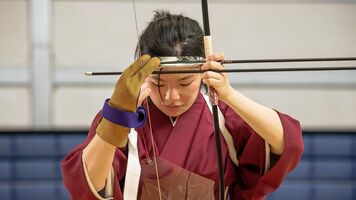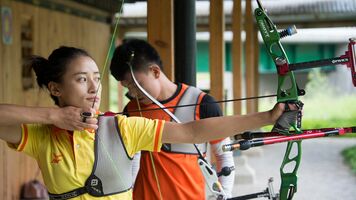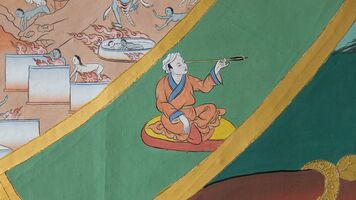Archery is in our blood: In the Land of the Thunder Dragon
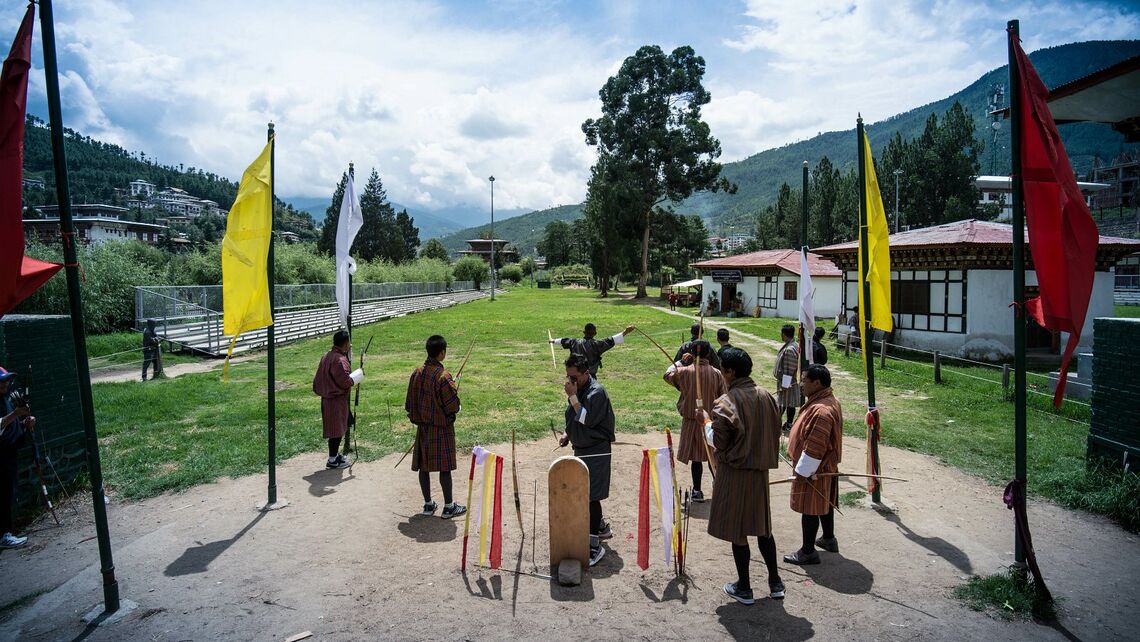
This is part one of a three-part series called In the Land of the Thunder Dragon exploring the culture of archery in Bhutan. Part two is An Olympic Flagbearer and part three is Tradition, religion and identity.
“Why is archery so important here?”
I’m talking to an archer called Singhye. We’re on the range at Chinglimithang, in the capital Thimphu, on a bright Saturday morning in September.
He replies: “Are you married?”
“No.”
“When you get married, you’ll understand why it’s so important.” He laughs.
He points back to the action. A distinctive wooden target is dug into the earth in the centre of a phalanx of coloured flags. A dozen archers from two separate teams are watching from behind two brick hides on each side of the range.
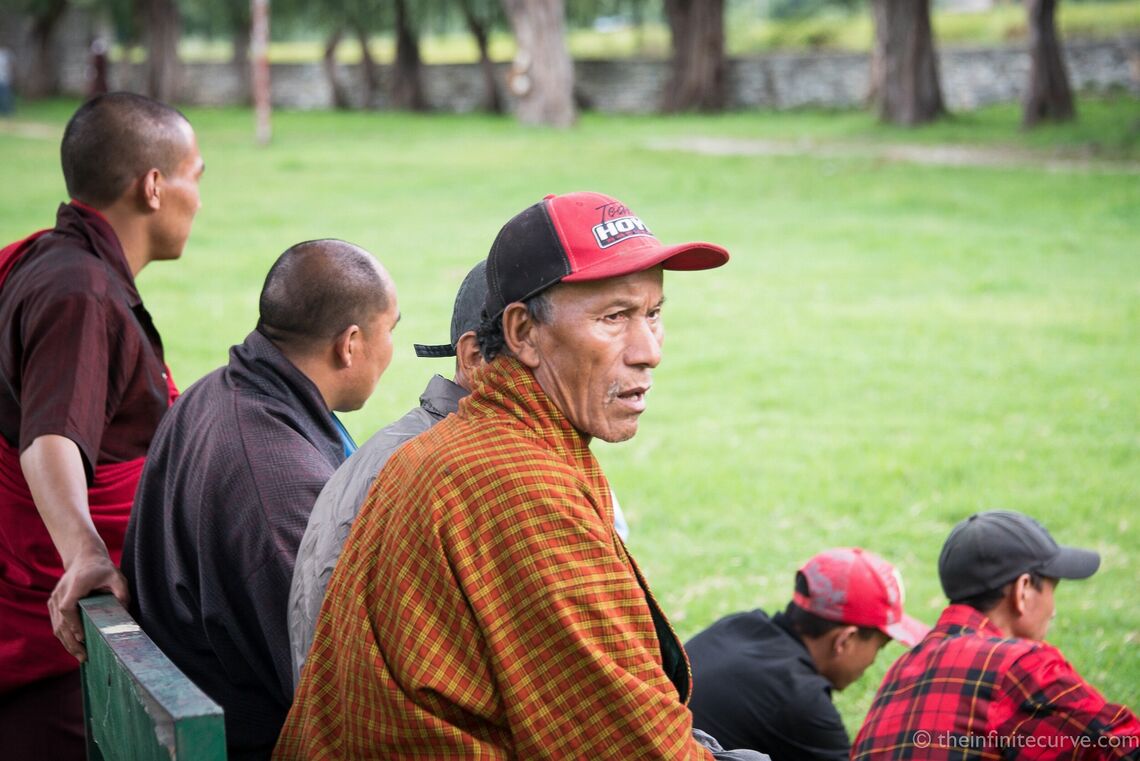
Standing near the target is a man dressed in the distinctive gho, the Bhutanese national dress, accompanied with gleaming Nike trainers and a Hoyt baseball cap.
He’s shouting and waving at a teammate holding a bamboo bow 145 metres away at the other end of the range and telling him, in no uncertain terms, what went wrong with the aim on his previous shot.
He moves a couple of seconds later, dashing away from the target before his teammate shoots the next arrow.
It passes the target high and to the right, impacting softly into the twelve feet high earth barrier at the back of the range. He gets straight back out there and bellows.
There’s some giggling from the opposition. Another arrow scores a direct hit, and the team gathers for a brief song.
Welcome to archery, Bhutanese style.
----
“Archery is legend, history, love, divine, heritage, and tradition in Bhutan and in the blood of the Bhutanese.” - Ugyen Rinzin.
Memorably described as as “like a printers error, sandwiched between Methusalehs” by travel writer Russell B Carpenter, Bhutan is a tiny Himalayan nation, bordering Tibet to the north and India to the south, and just above Bangladesh on the map.
It is the last remaining Himalayan kingdom.
Roughly the size of Switzerland, Bhutan is home to around 800,000 people, and the improbable geography ranges from lush jungle in the very south to snow-covered, 6,000-metre peaks in the very north.
Most of the population lives in the western half of the country, centred in two valleys carved by still-raging mountain rivers.
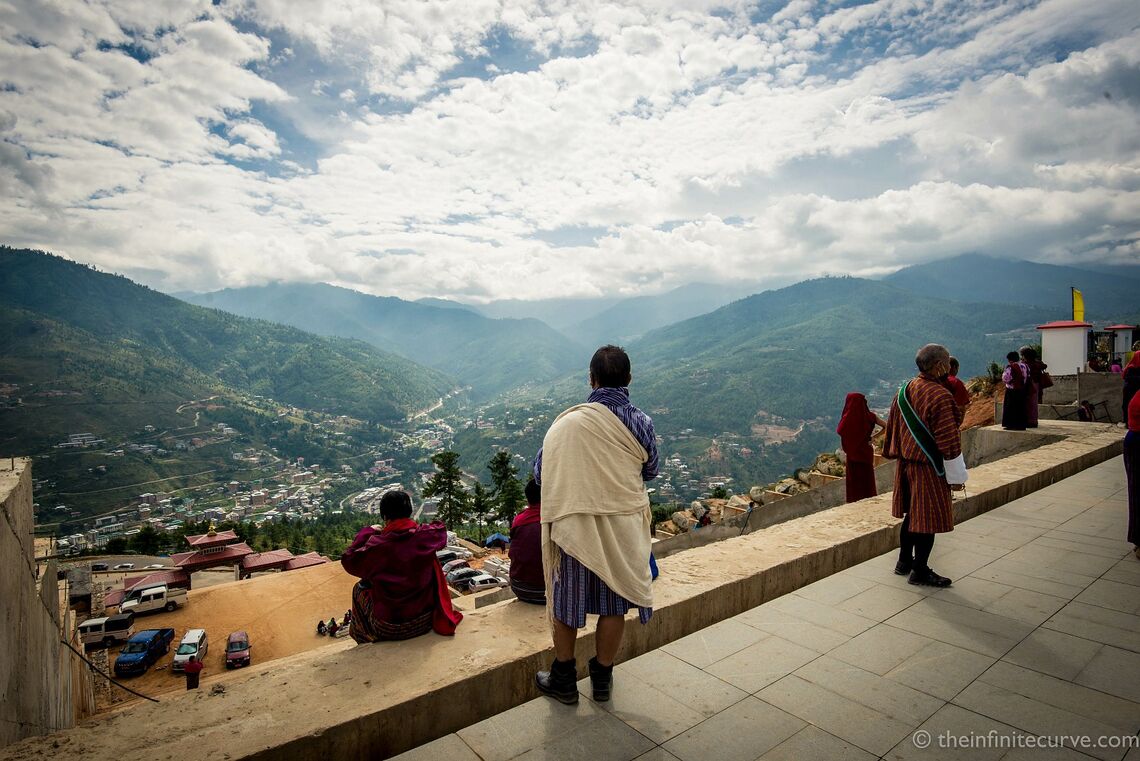
Travelling across this rugged land of hairpin turns and precarious pathways remains an adventure. They say the longest stretch of straight road in the country is still the runway at Paro airport.
In its entire recorded history, Bhutan has remained fiercely independent; unconquered and unoccupied.
The sheer inaccessibility of the place must have played a role, but hundreds of years of turbulent relations with the neighbours had to be skilfully negotiated towards peace in the last century. Bhutan remains closely linked to India.
There have been recent moves towards full democracy, but Bhutan has been ruled in the modern era by a benevolent monarchy, a paternalistic series of kings who have carefully stage-managed the country into the 21st century.
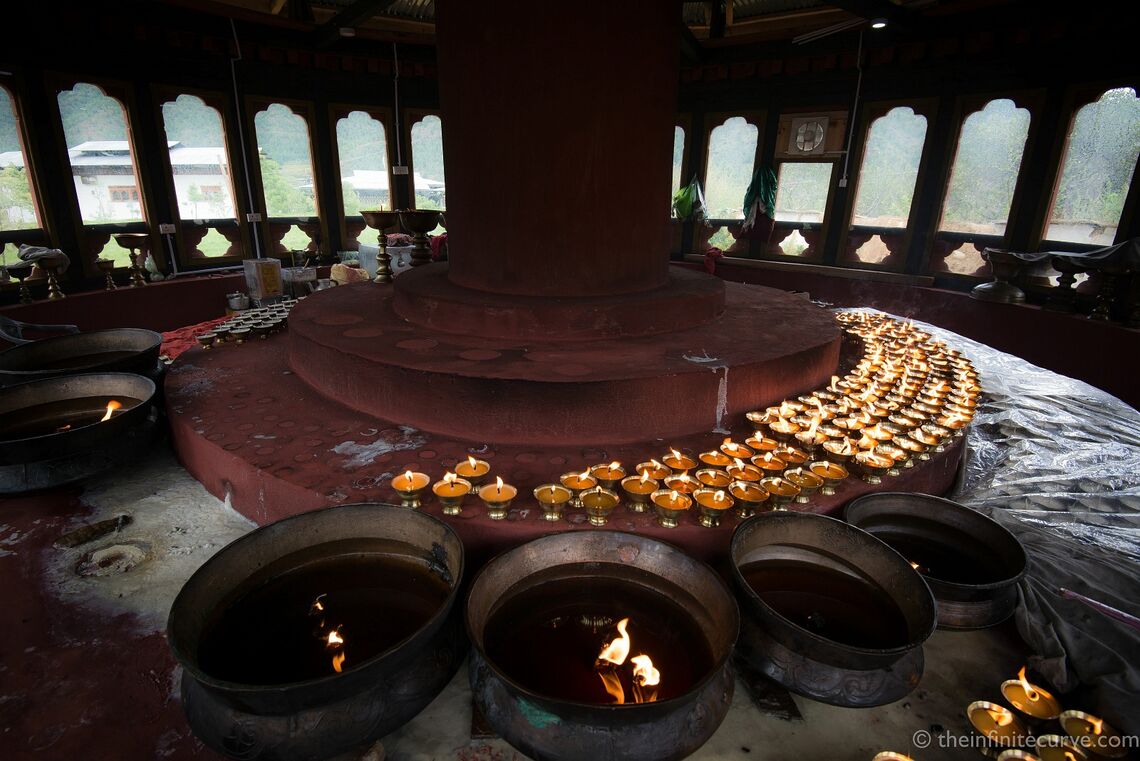
Bhutan has been popularly elevated in Western imaginations as a kind of Himalayan Shangri-La, a cut-off land preserving centuries-old Buddhist tradition complete with lush valleys and towering mountain fortresses.
In the 1960s, there were only a few miles of paved road in the country, which otherwise looked much as it did in medieval times. The Central Road, the single highway connecting the rural east and the more populous west was only completed in the mid 1970s; before that, people got about on horses and yaks.
Television only arrived in 1999; Bhutan was the last country on the planet to introduce it.
The country’s best-known cultural export is the concept of Gross National Happiness. A brainchild of the fourth king, the concept has resonated. The main tenets are promoting sustainable development, the preservation and promotion of cultural values (like wearing national dress), conservation of the natural environment and ‘the careful establishment of good governance’.
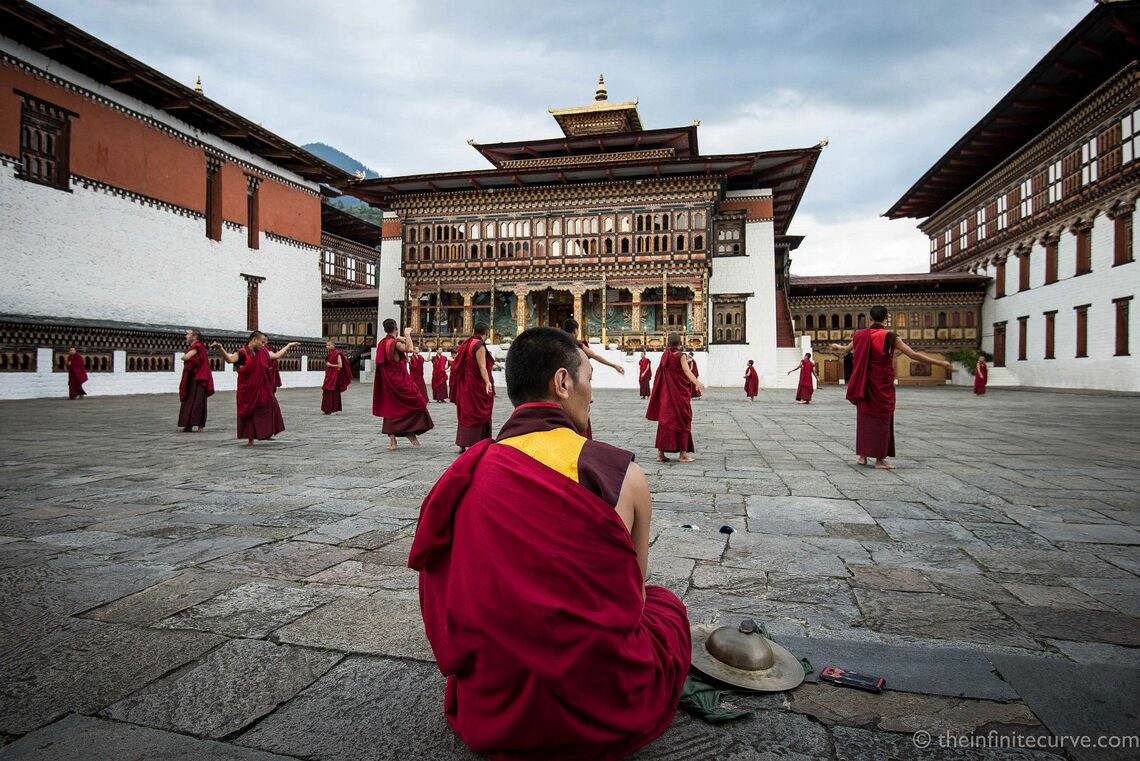
Tourism is still strictly managed, too – and almost half the country is designated a national park.
But there’s a good reason I’m here: it is the only country in the world where archery is the national sport.
This isn’t an ancient honour. It was declared as such in 1971 after Bhutan joined the United Nations – when the country was required to choose; at the same time, the blue poppy was declared to be the national flower and the raven became the national bird.
Nevertheless, Bhutan is unquestionably the only country in the world where archery is an essential part of the national identity.
Here, archery is intertwined with mythology, religion, politics and history like nowhere else on earth.
----
Changlimithang Stadium lies next to the national football arena in the very centre of the capital city of Thimphu, which is the only capital city in the world with no traffic lights, at all.
Every village and town across the country has an archery range.
Sometimes they do double duty as meeting grounds or concert venues. Changlimithang is actually two ranges side by side, each 145 meters long.
A traditional Bhutanese archery match consists of 13 players on each side, but only 11 of these actually shoot. At each end of the range is a painted wooden target: two and a half feet high, eleven inches across and a couple of inches thick.
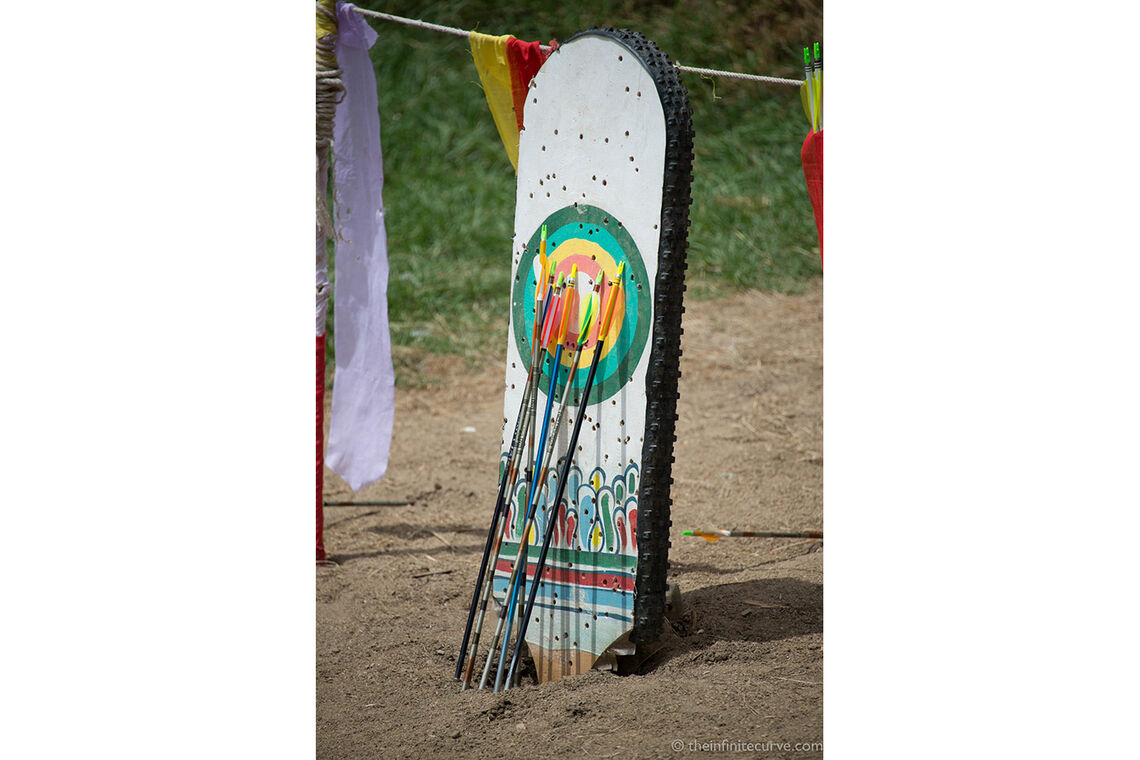
The target and shooting lines are usually surrounded by flags; here they are solid white, red, green, yellow and blue.
Each of these colours has a distinct meaning in Tibetan Buddhism, the official state religion that permeates every aspect of Bhutanese life.
Archers shoot end-to-end, each taking their turn to shoot two arrows.
A direct hit on the target scores two points; hits on the ground within an arrow’s length of the target score one point, among many other rules. The concentric circles on the target do not score any more points than a hit, although there may be prizes for the best bullseye.
A set consists of the first team to 25 points, and a best-of-five-sets match can last for days on end.
National dress is mandatory, and each archer carries coloured scarves in their belt showing the number of hits they’ve achieved.
The most distinctive feature of Bhutanese archery is that every arrow hit on the target is marked by the scoring team with a brief song and a dance; a celebration of the skill and courage taken to make the shot.
Matches are a riot of goading the opposition and mockery of skill. It’s a noisy, gaudy, raucous display unlike almost every other kind of archery on the planet.
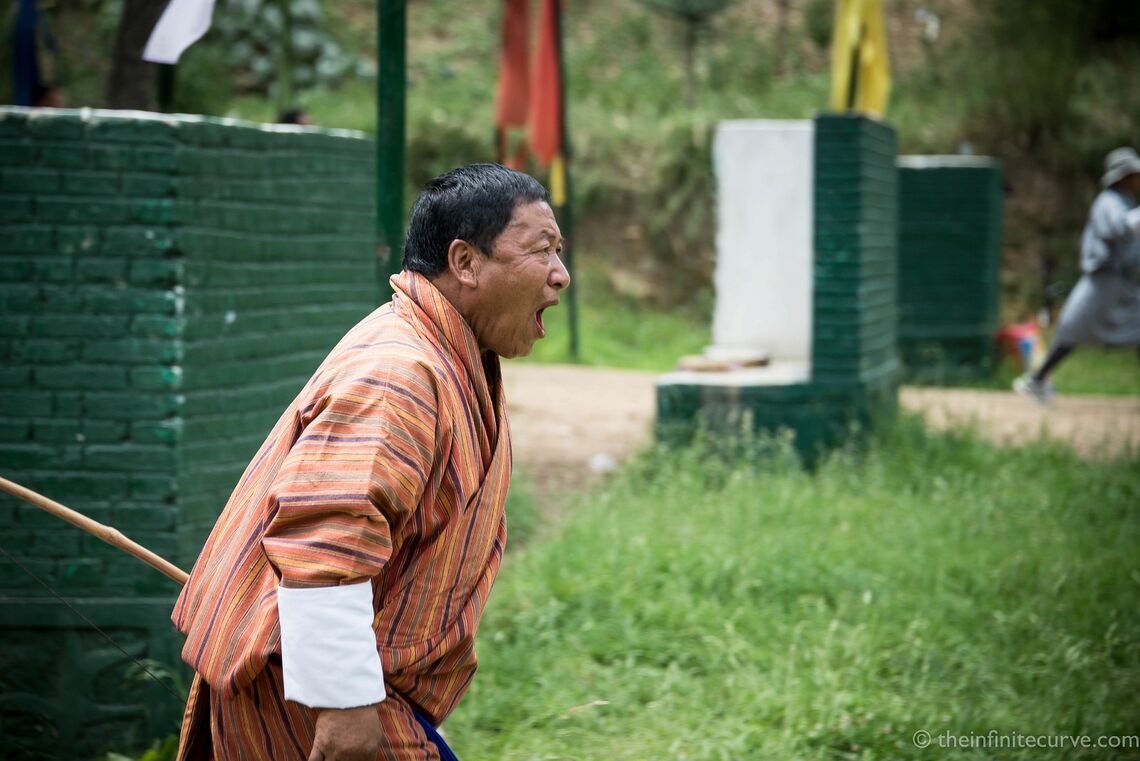
Archery plays many roles in Bhutanese life: fitness, self-improvement, entertainment, and has a social element (almost akin to golf in other countries – a way to introduce friends or business partners).
More serious matches can involve consulting specialist astrologers on who should be in the team and where the match should take place.
Sometimes, ritual magic is employed to weaken the opposition and bring good luck on the range. There are local and national leagues, often with cash prizes or big-ticket items including cars and motorbikes.
This morning sees competition using traditional bamboo bows on one range, and compound bows on the other.
Historically, archers used an un-recurved bow made from two pieces of shaped and tapered bamboo, wired together at a central handle. Simpler to construct than most Asiatic bows, there has recently been a revival of interest in this, the more traditional side of the sport.
In the centre of the range is a small shop where a man called Sithar Tshering runs a business custom-manufacturing traditional bows, with a ready audience on his doorstep.
Traditional arrows are made from bamboo and straightened by fire, with pheasant feather fletchings and sharp iron points. Small leather finger caps are used instead of a tab.
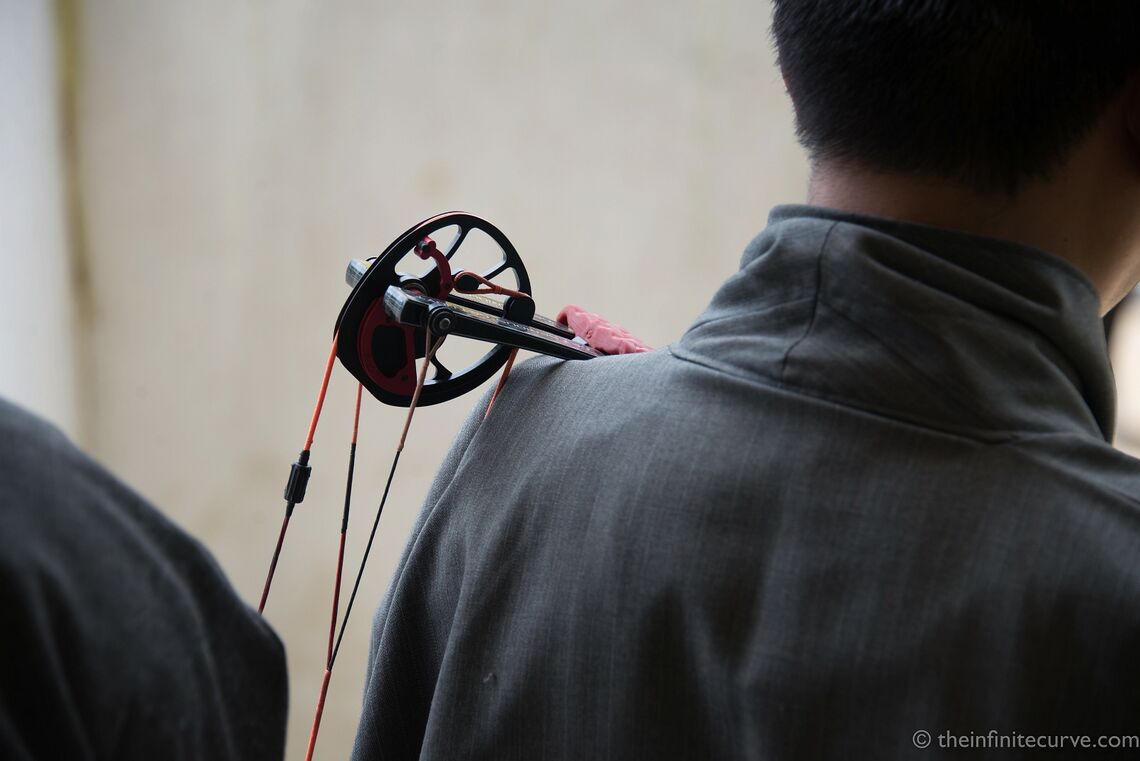
Over the last 25 years, Bhutanese archery has become dominated by heavy-poundage compound bows, shot in distinct ways unfamiliar to international archers. Magnifying sights are not used; most archers use simple recurve sights or just shoot instinctively, using the tip of the arrow.
Release aids are banned, too, and bows are shot using simple leather tabs, or just straight off the fingers.
In a country where the national average wage is USD$400 a month, most archers use brand-new models. Bows are a status symbol and people borrow or save for the latest and greatest.
As the team shoots from one end, some of the braver members of the team stand at the target end, just close enough to watch the arrow flight path and shout to teammates at the other end of the range.
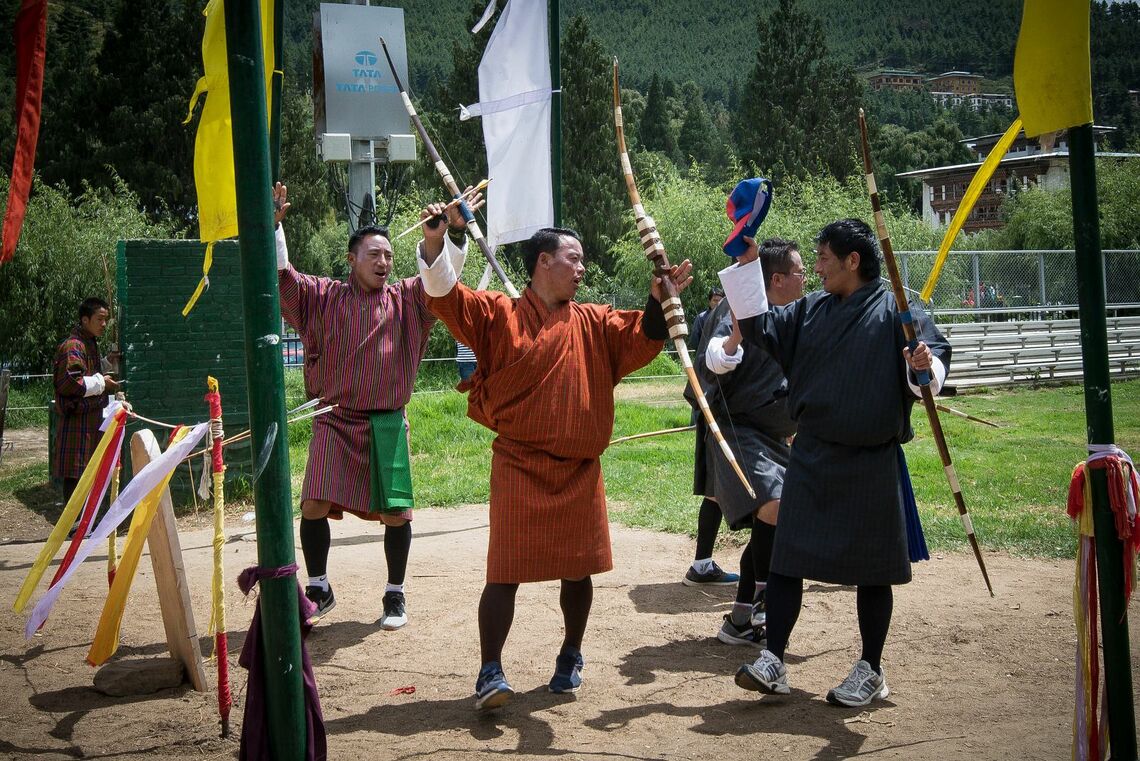
The approach to safety in Bhutan is evolving. It is too dangerous, still – and there have been accidents.
Historically, the casual approach to risk is part of the masculine culture of traditional archery, an almost-exclusively male world. (There isn’t actually a rule banning women from the ranges, it’s simply a cultural norm).
Women have usually taken a supporting role in the sport, bringing food and drink and with their own set of songs and dances to cheer on husbands or mock the opposing team.
It’s all the more interesting when you consider that, on the world stage, it’s women who have most commonly represented Bhutan.
John Stanley’s three-part In the Land of the Thunder Dragon series explores the culture of archery in Bhutan. Part one is called Archery is in our blood, part two is An Olympic Flagbearer and part three is Tradition, religion and identity.


